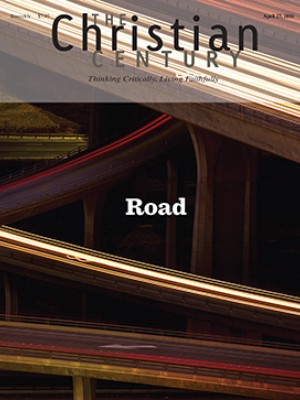First U.S. slavery museum memorializes and educates
(The Christian Science Monitor) Unlike other antebellum plantations on the winding River Road along the Mississippi, which are known for their manicured gardens and as locations for weddings, Whitney Plantation, near Wallace, Louisiana, has a different purpose: to tell visitors the story of slavery in the United States.
The museum is the first of its kind in the country. It opened in December 2014 after John Cummings, a real estate magnate and retired New Orleans trial lawyer, spent $8.6 million of his own money redeveloping the 250-acre site.
Cummings purchased the former plantation from a petrochemical company 16 years ago. Researching its history, he found household inventories from former owners that showed that “the second most valuable property here next to the real estate was slaves,” he said.
Read our latest issue or browse back issues.
Realizing his ignorance about slavery, Cummings began to research the subject and now has read more than 400 books.
“I’m still reading,” he said.
Whitney Plantation was established by Ambroise Heidel, an immigrant from Germany, in the 1750s. The family farmed indigo and later sugar cane with the labor of more than 350 slaves.
The names of those slaves now are engraved on black granite slabs that are part of the plantation’s Wall of Honor. Other memorials list the names of some 107,000 slaves who once toiled in the state of Louisiana.
“We have not acknowledged our great sin of slavery as a nation,” Cummings said. “We must own it.”
The federal government should have built a museum like Whitney Plantation, he said. But it has not “because of the prejudice.”
Cummings has visited black churches in neighboring areas, where some of the descendants of those who were enslaved at the plantation live. “I’ve been able to address their congregations and tell them about what we are doing,” he said.
Cummings met historian Ibrahima Seck from Senegal, one of the places from which slaves were kidnapped and taken to the United States, at an event in Louisiana in 2000. Cummings asked Seck to work on the museum project. In 2012, Seck moved to New Orleans to work full time for the museum, where he is director of research.
Today visitors who tour Whitney Plantation encounter memorials, slave cabins, a French Creole–style Big House built in the late 18th century, and a Baptist church donated and moved from the town of Paulina, Louisiana. The Field of Angels, a circular courtyard, is dedicated to the 2,200 slave children who died before their third birthday in St. John the Baptist Parish in the 40 years before the Emancipation Proclamation of 1863.
“The most powerful impression I had at my first visit to the Whitney Plantation was the way the museum forces you to enter the site in a way that does not foreground the large home where white enslavers lived,” said Laura Rosanne Adderley, associate professor of history at Tulane University in New Orleans. “This is a memorial site, remembering the lives of people who suffered unspeakable horrors—and horrors still rarely spoken of regularly in the United States.”
Some have criticized Cummings for moving artifacts and buildings such as slave quarters, a latticed steel prison, and the Antioch Baptist Church from their original sites to Whitney Plantation.
The critics “don’t see the big picture,” said Ken Smith, an artist and retired plastic surgeon.
He has donated two statues to the site that were supposed to be displayed at the proposed U.S. National Slavery Museum in Fredericksburg, Virginia, which never opened.
In its first year Whitney Plantation received more than 34,000 visitors, including thousands of schoolchildren.
Whitney Plantation has also drawn international visitors, including a party of more than 100 African mayors.
Seck once spent more than three hours giving a tour to a group of Chinese scholars, public officials, and businesspeople.
“Some of the Chinese visitors became very emotional,” Seck said.
Cummings has also seen people crying at the museum.
“I still cry,” he said.
Cummings hopes that Whitney Plantation will host 100,000 visitors this year, which would help the museum become financially self-sustaining.
Cummings plans to start an institute studying slavery on the property. He is also considering someday donating Whitney Plantation to the Smithsonian Institution or to a group of black universities.
“We educate people about slavery, making them understand how much people suffered and how important it is to study slavery at school,” Seck said. “Everyone has heard about slavery in the United States, but they don’t know the details. By the end of the tour, many adult visitors fall silent and think.”
This article was edited on April 12, 2016.





